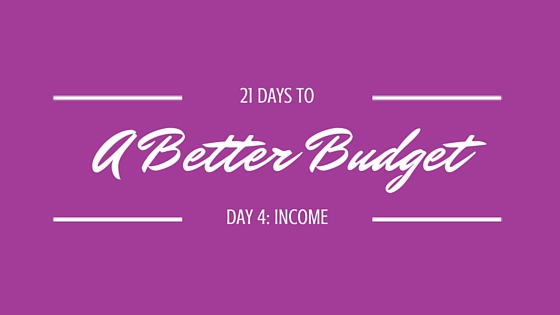
Good morning! Day 4, here we come. If you missed Day 3, 2 or 1, you can find them all HERE.
Let me ask you: Have you ever painted a room in your house? If you have, then you know that about 80% of the job is prep work. Taping off the trim. Patching up the holes. Wiping down the walls.
I don’t know about you, but I find this part of painting to be really tedious. If I could skip it, I would. But as I’ve learned the hard way, short cuts do me no favors. When I don’t do the prep, my paint job – no matter how high quality the paint – looks awful.
Painting, as it turns out, is an awesome metaphor for budgeting. You can’t take short-cuts if you want to make a realistic budget. And remember, as we said on Day 2, the only kind of budget that will work is a realistic one.
Which is why it’s so important that you lay the ground work before we dig in and start budgeting. The good news is you are two-thirds of the way there:
First is Tracking, which you started on Monday;
Next is Goal-Setting, which is what you did yesterday when you identified your three things;
Last is Calculating Your Income, which is today’s task.
If you bring home a consistent paycheck, calculating your income is quite straight-forward. If you are blessed with a variable income like I am, it may be a little bit trickier. That’s why I will be dedicating a whole day in this 21 Day series to variable income budgeting.
For now, though, here is what I want all of you to do: Calculate your total monthly income. Now when I say “total”, I mean TOTAL. We’re talking paychecks, side gigs, bonuses, social security benefits, alimony, child support, the cash your grandmother hands you for your birthday, everything.
When using this more inclusive definition of income, even those of you with a steady paycheck may find that your income changes from month to month. It could be just a couple of dollars; or it could be a few thousand dollars in the month that you earn, let’s say, an annual bonus.
For today, focus on the net number — the amount that you are taking home after taxes and all deductions, including benefits. You can make a note of those deductions and their amounts, just for your awareness.
If you are a variable income earner, I want you to start by tallying every dollar you earned last month (December 2015). For extra credit, you can write down the average amount you earned per month in 2015 (total income divided by 12). And for super extra credit, you can write down your lowest earning month last year.
The reason it is so critical to tally all of the dollars – and not just the ones from the regular paycheck – is because from now on, every single dollar that comes into your household is going to be spent on purpose. Lots of budgeting experts call this giving every dollar a job.
In a nutshell, your household economy is going to work on a continual loop of EARN the dollars, ASSIGN the dollars a job, have the dollars PERFORM their job (i.e. spend and save).
One quick note on calculating income for those of you who are married: It’s my strong recommendation that you calculate your combined income, rather than His and Hers Income. It doesn’t matter who earned it – once it comes into the household, you will both decide how it gets spent. If you are newly married and still have separate accounts, that’s okay — you can still make a joint budget.
So that’s it for today: Tally up your total monthly income.
P.S. I pinky promise that we will talk more about marriage and money in a future email. But if you already have a question (or 37) that you want to make sure I address, please leave a comment on this post – or send me a confidential email.
Are you subscribed to the FREE 21 Days to a Better Budget Newsletter yet? Join us HERE.











Leave a Comment